Finger stiffness is a common symptom after an injury or with arthritis. Finger stiffness can occur in the morning or after a period of inactivity.
With rheumatoid arthritis, finger stiffness usually starts in the morning and persists for a few hours. With osteoarthritis, finger stiffness most often occurs after periods of inactivity or even when awaking in the morning.
In this post, we will share some simple exercises you can do to herlp relieve your finger stiffness.
Best of all, these exercises don’t require any fancy equipment and can be done all with household items you already own. They also only take a few minutes to complete.
1.) PIP Blocking Exercise
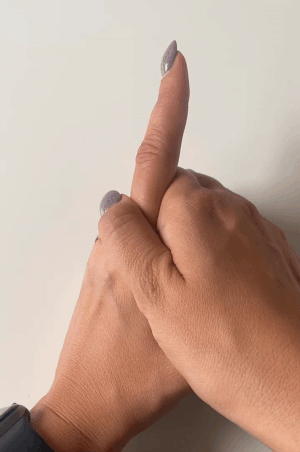
In this exercise you will use one hand hand to put pressure on the metacarpophalangeal (MCP) joint to keep the MCP from moving. As observed in the video above, the thumb and index finger are wrapped around the index finger of the hand you are exercising.
The goal is to bend the middle knuckle, the proximal interphalangeal joint (the PIP), down as far as you can while keeping the fingertip straight.
You may have to play around with the hand position to find which position is going to be the most comfortable for you.
Try and repeat this exercise 10 times and hold at the end range for 2-3 seconds each time.
Repeat on each finger that you experience stiffness.
2.) DIP Blocking Exercise
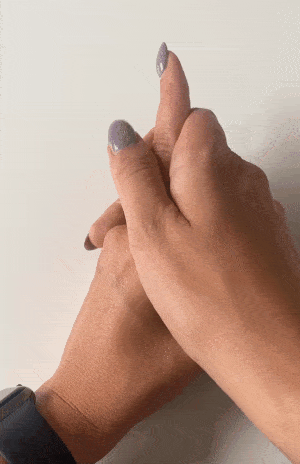
For this finger stiffness exercise, you will start by using your one hand to stabilize both the MCP joint and the DIP joint of the stiff finger. The goal is to bend only the end of the finger and to keep the other two knuckles straight.
You can see in the image above, the pressure is around the proximal knuckle (PIP) and the MCP joint and that the only part of the finger that is moving is the fingertip. You may have to play around with the hand position to find what is comfortable for you.
Keep in mind that the hand positioning might be a little different in each finger.
This exercise helps to allow the flexor digitorum profundus (FDP) flexor tendon gliding through the full range of motion. You may notice that other fingers are moving with the finger you are working on and that is normal!
This is because the finger flexor tendons all originate from the same muscle belly in the forearm so when the muscle contracts, the tendons next to them may also move.
Try and repeat this exercise 10 times and hold at the end range for 2-3 seconds each time.
Repeat on each finger that you experience stiffness.
3.) Hook Fist
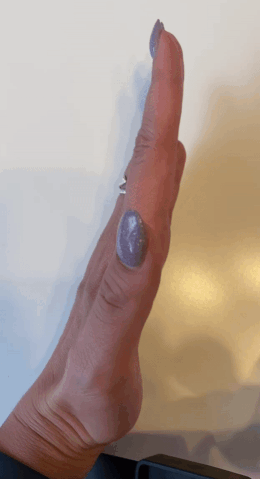
To start this exercise for finger stiffness you’ll want to keep your big knuckles (the MCP) straight. Slowly bend all fingers down to try and touch the fingertips down to the palm.
If you can’t touch the fingertips all the way to the palm, that’s okay, just try and move as far as you can.
Once you move as far as you can, hold that position for 3-5 seconds before straightening the fingers back up. Then repeat 10 times.
If you struggle to keep the fingers flat you can place the back of the hand on a surface like a tabletop or counter to work on keeping them straight. You will probably want to place down a towel or soft fabric in this otherwise the movement can put pressure on your knuckles.
4.) Hook Fist with Object
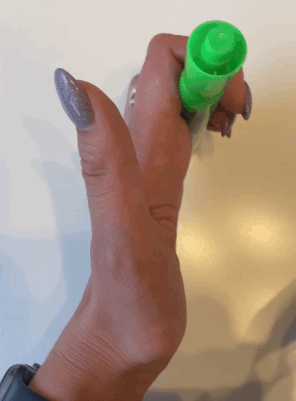
If you have a hard time with the exercise mentioned above, hook fist, try adding an object. The exercise set up is the same but you can use a small cylindrical object like a marker, highlighter, or pen/pencil in the space between the finger tip and the palm of your hand.
The smaller the object is (like a pen) the harder the exercise will be. Start with something larger like the highlighter if you struggle with this exercise. Then progress to the smaller object.
Once the object is held between the finger tip and the palm you can roll into a full fist position for even more of a challenge.
Repeat this exercise 10 times.
5.) Make a Fist
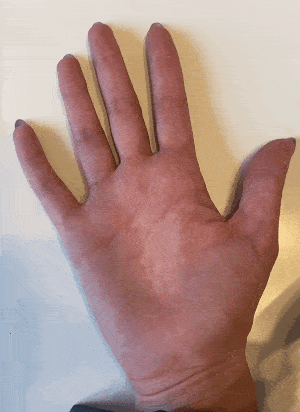
For this exercises, start with your hand open. Slowly bend the fingers down towards the palm to make a fist.
You don’t need to squeeze the fingers down for this to be an effective exercise.
If you cannot make a full fist, that is okay, simply move as far as you can without pain.
Repeat this exercise 10 times.
6.) Finger Taps
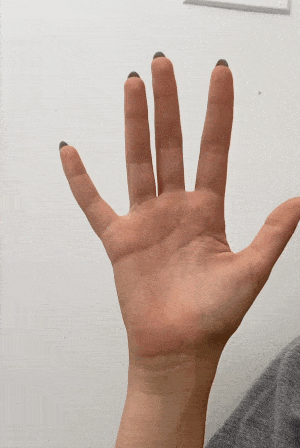
Start with the hand open, gently tap each finger one at a time towards the thumb to touch the tip of the thumb.
Cycle through each finger 10 times.
You may notice that the pinky is harder to reach than the index finger, which is normal. If you can’t reach all the way across, reach as far as you can.
This exercise helps to move each finger in isolation which can help with the finger stiffness!
Remember motion is lotion!
Have you heard the saying “motion is lotion?” It definitely applies to finger stiffness. The best way to combat your finger stiffness is to move the joints!
As we move the joints we are allowing the joints to move through their range of motion keeping the tendons and muscles active. These exercises also help to keep the tendon gliding over the joint.
Movement also helps to bring blood flow to that area which can also decrease inflammation and swelling in the joint. So if you experience some joint swelling, these exercises may also be helpful.
Who should try these exercises?
- If you have hand osteoarthritis that leaves your fingers feeling stiff
- If you have experienced an injury like a wrist fracture or hand fracture and have stiffness in the joints
- If you were immobilized at the wrist or hand for a period of time after an injury and have continued stiffness
- If you have stiffness in one finger or the entire hand
If you have arthritis in your hand and are looking for more exercises check out these 7 Daily Hand Exercises for Arthritis to work your whole hand.
You should be well on your way to reducing finger stiffness but here are a few things to remember:
- These exercises should not be painful, if you feel any pain try the exercises at a slower pace or stop the exercise 🛑
- Much like any new exercise program, it is always best to consult with your doctor before starting 👩🏻⚕️
- You need to do these consistently! You might feel minimal difference after the first time you do them but try to aim for a few times a day to see a difference. Over time, you may notice that you don’t need to do them as frequently📈
If you have a hard time remembering to do exercises or want to try something new, Reactiv has developed games that you control using these exercises instead of tapping on your phone.
You use the same movements that are described here to move the game objects around.
If you want to try for yourself, download the app here:
Reactiv may be covered by your insurance provider, provide your information and we will reach out to confirm eligibility.
Disclaimer: This post is for general informational purposes only. It should not be used to self-diagnose and it is not a substitute for a medical exam, cure, treatment, diagnosis, and prescription or recommendation. You should not make any change in your health regimen, exercise regimen, or diet before first consulting a physician and obtaining a medical exam, diagnosis, and recommendation. Reactiv Inc. is not liable or responsible for any advice, course of treatment, diagnosis or any conclusions drawn, services or product you obtain through this post, video, infographic, table, photos, or site.
